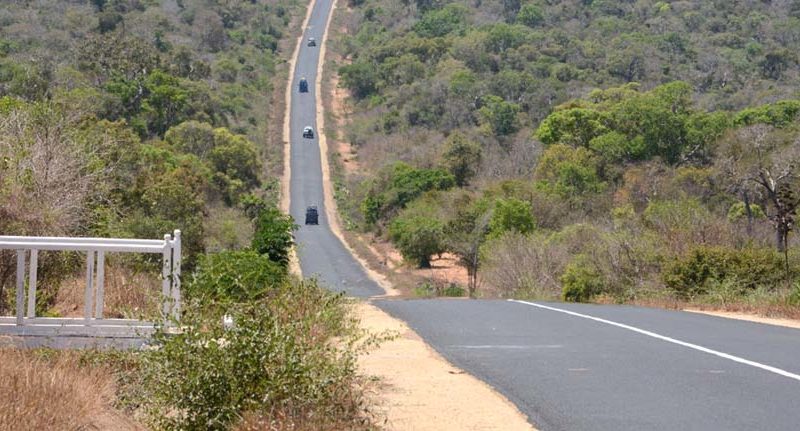NATIONAL PARK ZOMBITSE VOHIBASIA – A Fascinating Hidden Gem of Madagascar
Madagascar, the island of a thousand wonders, is world-renowned for its astonishing wildlife and breathtaking landscapes. But beyond its famous parks like Andasibe or Isalo lies a lesser-known treasure: National Park Zombitse Vohibasia.
This fascinating forest reserve, located in the southwest of Madagascar, acts as a biological bridge between the island’s humid eastern forests and its dry spiny thickets in the south. It’s a place where biodiversity thrives, where rare lemurs leap through sun-dappled trees, and where bird calls fill the warm, fragrant air.
Despite its incredible ecological importance, Zombitse Vohibasia remains one of the least visited national parks in Madagascar—making it the perfect destination for travelers seeking authentic wilderness, calm exploration, and a genuine connection with nature.
🌿 What Makes NATIONAL PARK ZOMBITSE VOHIBASIA So Special?
Located about halfway between Isalo National Park and Toliara, this park covers roughly 360 square kilometers of forest and savanna. Unlike other regions in Madagascar, Zombitse Vohibasia National Park lies within a transition zone—meaning it blends features of both the western dry forests and southern spiny deserts.
This overlap creates a unique ecosystem filled with plants and animals that exist nowhere else on Earth. In fact, scientists consider it one of Madagascar’s most valuable biodiversity reservoirs.
Here are just a few reasons this national park deserves a place on your itinerary:
-
It’s home to the Zombitse sportive lemur, a species found nowhere else in the world.
-
Over 80 species of birds have been recorded, including the rare Appert’s greenbul—one of Madagascar’s most sought-after birds by ornithologists.
-
The park’s forest is lush yet manageable to explore, offering pleasant trails suitable for both avid hikers and casual travelers.
-
It’s easily accessible along the RN7, Madagascar’s main travel route from Antananarivo to Toliara.
Visiting this park is like discovering a secret: peaceful, fascinating, and full of life.
📍 Location & Access
National Park Zombitse Vohibasia is situated in the Atsimo-Andrefana Region, about 150 km northeast of Toliara (Tuléar) and 90 km west of Isalo. It lies directly along the RN7 highway, one of the best-maintained roads in Madagascar, making it an easy and worthwhile stop for anyone traveling through the south.
The park is divided into three forest sections: Zombitse, Vohibasia, and Isoky-Vohimena, each with slightly different landscapes and vegetation types.
Most visitors enter via the Zombitse sector, where the main trail networks and guide stations are located. You can reach the entrance in roughly two hours from Isalo or three hours from Toliara by car.
🌤️ Climate and Best Time to Visit
Zombitse enjoys a semi-arid climate with distinct dry and rainy seasons.
-
Dry season (April – October): Ideal for hiking and wildlife watching. Trails are dry and animals are easier to spot.
-
Rainy season (November – March): The park becomes greener, flowers bloom, and reptiles are more active—but trails can be muddy.
Average temperatures hover around 25 °C, making it comfortable for most of the year.
If you’re interested in birdwatching, May to September is the best period to visit, as many species are nesting and visible in the open forest canopy.
🌲 The Vegetation: A Living Museum of Madagascar’s Flora
The vegetation of Zombitse Vohibasia National Park represents a living transition between two great worlds: the humid forests of the east and the arid thickets of the southwest.
You’ll walk under the shade of tall deciduous trees, through clusters of baobabs, and past twisted shrubs adapted to long dry months. The canopy, about 10–15 meters high, shelters many unique species, including:
-
Adansonia za – one of Madagascar’s iconic baobabs
-
Cedrelopsis grevei – the famous katrafay tree used in local traditional medicine
-
Grewia, Carissa, and Teclea species – forming part of the evergreen undergrowth
During the rainy season, the forest bursts into color with wild orchids, aloes, and succulent plants in bloom.
This combination of dry forest and spiny flora makes Zombitse one of the most botanically diverse habitats in southern Madagascar.
🐒 Wildlife of NATIONAL PARK ZOMBITSE VOHIBASIA
Despite its modest size, the park shelters an impressive variety of wildlife. Many species here exist nowhere else on Earth—a hallmark of Madagascar’s isolation and evolution.
Lemurs of Zombitse Vohibasia
Madagascar’s iconic primates are one of the biggest reasons travelers come here. The park hosts eight species of lemurs, including:
-
Zombitse sportive lemur (Lepilemur hubbardorum) – a nocturnal species found only in this region. You may spot it peeking from tree holes during the day.
-
Verreaux’s sifaka (Propithecus verreauxi) – known for its elegant leaps and “dancing” walk on the ground.
-
Red-fronted brown lemur (Eulemur rufifrons) – often seen in small, curious groups.
-
Ring-tailed lemur (Lemur catta) – the famous species with a long striped tail, sometimes spotted near open areas of the park.
If you’re lucky and accompanied by a skilled guide, you may also see mouse lemurs or dwarf lemurs during dusk or night walks.
Birdlife: A Paradise for Birdwatchers
For bird enthusiasts, Zombitse Vohibasia is a true paradise. More than 80 species of birds inhabit this park, nearly half of which are endemic to Madagascar.
The star of the show is the Appert’s greenbul, a small olive-colored bird that can only be found here. Birdwatchers from around the world visit the park just to see it.
Other species you may encounter include:
-
Giant coua and Coquerel’s coua, both ground-dwelling birds unique to Madagascar
-
Madagascar cuckoo roller, a striking aerial hunter
-
Vangas, a fascinating family of birds adapted to every ecological niche
-
Madagascar hoopoe, white-browed owl, olive-capped coua, and crested drongo
Bring binoculars—the early morning and late afternoon hours are prime time for bird activity.
Reptiles, Amphibians, and Insects
The dry forest of Zombitse Vohibasia also harbors a spectacular diversity of reptiles and amphibians:
-
Around 33 species of reptiles, including Standing’s day gecko, Dumeril’s boa, Oustalet’s chameleon, and various skinks and iguanas.
-
6 to 8 species of frogs, often seen during the rainy months near temporary ponds.
-
Numerous colorful butterflies, beetles, and mantises, contributing to the forest’s vibrant life.
The park is an ideal place for photographers fascinated by the small wonders of nature.
🚶♀️ Trails and Visitor Experience in Zombitse Vohibasia National Park
Unlike many other Malagasy parks that require strenuous hikes, Zombitse Vohibasia offers short and pleasant walking trails, perfect for visitors of all fitness levels.
Main Circuits
-
Zombitse Circuit – about 2 hours; a great introduction to the park’s flora and fauna.
-
Vohibasia Circuit – slightly longer; focuses on unique vegetation, including ancient baobabs and medicinal plants.
-
Ihoky-Vohimena Circuit – less visited; a haven for reptiles, amphibians, and birdwatchers.
Each walk is accompanied by a local guide, whose knowledge of the forest and its creatures transforms every step into discovery.
Trails are generally flat and shaded, making them accessible to families and older travelers. You’ll often pause as your guide points out hidden lemurs, chameleons, or birds perched above.
Practical Information
-
Guides: Hiring a certified local guide is mandatory—and well worth it. Their expertise ensures you won’t miss the hidden treasures of the forest.
-
Facilities: The park has a small visitor center with toilets, picnic areas, and local souvenir stands.
-
What to bring: Comfortable walking shoes, a hat, insect repellent, sunscreen, and enough drinking water. Binoculars and a camera are must-haves.
-
Accommodation: There are no hotels inside the park, but you can stay in nearby Sakaraha, or continue to Isalo or Toliara for more comfort.
A half-day visit is sufficient for a quick overview, but if you can spend a full day, you’ll have time to explore multiple trails and observe the forest at different hours.
🌍 Conservation and Local Community
Like many areas in Madagascar, Zombitse Vohibasia National Park faces significant conservation challenges.
Threats
-
Slash-and-burn farming (tavy): Forest edges are often cleared for crops, threatening native species.
-
Bushfires: Fires, intentional or accidental, regularly damage large forest sections.
-
Illegal logging and mining: Some areas face pressure from sapphire mining and timber extraction.
-
Habitat fragmentation: The forest is isolated from other natural areas, reducing genetic diversity among species.
Protection Efforts
Despite these issues, major steps are being taken to preserve this unique ecosystem:
-
The park is managed by Madagascar National Parks (MNP) and supported by organizations such as FAPBM(Foundation for Protected Areas and Biodiversity of Madagascar).
-
Local communities actively participate in conservation programs, serving as guides and forest rangers.
-
Firebreak systems are regularly maintained to prevent wildfire spread.
-
Ecotourism is promoted as a sustainable income source, encouraging villagers to protect the forest instead of exploiting it.
By visiting responsibly, you directly contribute to these preservation efforts. Entrance fees and guide services support both the park and the surrounding community.
🗓️ How to Include Zombitse Vohibasia in Your Madagascar Itinerary
National Park Zombitse Vohibasia fits perfectly into most southern Madagascar itineraries.
Suggested Route Along the RN7
| Day | Route | Activity |
|---|---|---|
| Day 1 | Antananarivo → Isalo | Overnight near Isalo National Park |
| Day 2 | Isalo → Zombitse Vohibasia | Morning departure, half-day exploration with a local guide |
| Day 3 | Zombitse → Toliara | Continue toward the coast or Ifaty beach |
This itinerary allows you to discover three contrasting landscapes: the sandstone canyons of Isalo, the dry forest of Zombitse, and the coastal lagoons of Toliara—all within a few days.
🌺 Tips for Travelers
-
Start early: Morning is the best time for wildlife observation.
-
Respect the environment: Stay on marked trails and never feed animals.
-
Bring local currency (Ariary): Credit card payments are not available.
-
Support local crafts: Buying souvenirs made by villagers helps local development.
-
Hire local guides: Not only do they enrich your visit, but they also benefit directly from tourism income.
🌳 Why Zombitse Vohibasia Deserves More Attention
While many travelers rush from Isalo to the beaches of Toliara, they often overlook this incredible park right along the way. Yet National Park Zombitse Vohibasia offers an experience that is both authentic and educational—a place where conservation, community, and adventure come together.
It’s the kind of destination that surprises you with its calm beauty, where every rustle in the leaves could reveal a lemur, and every ray of sunlight filtering through the trees reminds you that Madagascar is truly unlike anywhere else.
🦋 Final Thoughts
Zombitse Vohibasia National Park is one of Madagascar’s hidden jewels—a fascinating ecosystem teeming with life, colors, and sounds. It’s small enough to explore in a day, yet rich enough to stay with you forever.
For anyone passionate about nature, photography, or off-the-beaten-path exploration, this park offers something truly special.
By visiting, you don’t just experience Madagascar’s natural beauty—you become part of the story that helps protect it for future generations.

